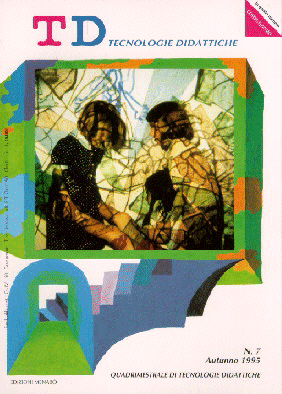Real-time experiments and physics education
Main Article Content
Abstract
Article Details
Section
Authors who publish with this journal agree to the following terms:
- Authors retain copyright and grant the journal right of first publication with the work simultaneously licensed under a Creative Commons CC BY 4.0 Attribution 4.0 International License.
- Authors are able to enter into separate, additional contractual arrangements for the non-exclusive distribution of the journal's published version of the work (e.g., post it to an institutional repository or publish it in a book), with an acknowledgement of its initial publication in this journal.
- Authors are permitted and encouraged to post their work online (e.g., in institutional repositories or on their website) prior to and during the submission process, as it can lead to productive exchanges, as well as earlier and greater citation of published work (See The Effect of Open Access)
References
Amodio L. (1992), Balzano E., Bobbio S., Guidoni P, Fusco A, Moretti M., Sassi E., Silvestrini V, Simone P. “Futuro Remoto, Laboratorio di Educazione alla Scienza, Catalogo delle Attività”, Bollettino n.0, CUEN Napoli.
Arons, A.B. (1990): A guide to introductory physics teaching, John Wiley New York.
Balzano E. (1992), P. Guidoni,. M. Moretti, E. Sassi, G. Sgueglia, “Introductory University Courses and Open Environment Approaches: the Computer as a multiRole Mediator in TeachingLearning Physics”, in Intelligent Learning Environments and Knowledge Acquisition in Physics, Nato ASI Series F 86, H. Mandl and A. Tiberghien eds, Springer Verlag, pg. 5 -19.
Balzano E., D’Ajello Caracciolo G., Paolantonio C, Sassi E.(1994). “Attività Didattiche basate su calcolatore per l’integrazione tra Fisica e Matematica nel biennio della Scuola Secondaria Superiore”, La Fisica nella Scuola, 27, pg.161-172.
Carmichael M., Driver R., Holding C. (1993) Research on Students’ Conceptions in Science: A Bibliography, Centre for studies in Science and Mathematics Education, The University, Leeds, UK.
Driver, R. (editor) (1989) International Journal of Science Education, special issue: Student Conceptions in Science vol.11 (5).
Guidoni P, Porro A. and Sassi E. (in press) “Force-Motion Conceptions: a Phenomenological Analysis of Physics Major Freshmen Questionnaires, Proceedings of International Seminar on “Thinking Science for Teaching: the Case of Physics”, Rome 22-27 Sept 94.
Hestenes D., Wells M., and Swackhamer G. (1992) Force Concept Inventory, Physics Teacher, 30, pg. 141-158.
Pfundt H., Duit R. (1993): Bibliography: Students’ alternative frameworks and Science Education . I.P.N. at University of Kiel, Germany.
Sassi E. (1992) “Basic Physics Education and Computer Supported Open Approaches” in Proceedings of TIE, European Conference about Information Technology in Education: a Critical Insight, Universitat de Barcelona, pg. 271-281.
Sassi E. and Balzano E. (1993) “Integration of Basic Physics and Mathematics in Secondary School: a Research/experimentation based on Microcomputer Based Laboratory and Modelling” Proceedings of EPS Conference on The Role of Experiment in Physics Education, Ljubljana: Drustvo matematicov, fisikov in astronomov, pg. 151-163.
Sassi E. and Balzano E. (in press) “Learning and Teaching motion: MBL approaches” in Thinker R. (ed.) Microcomputer Based Labs: Educational Research and Standards, Springer-Verlag.
Thornton R.K. (1990) L’uso del microelaboratore nel laboratorio di fisica per migliorare la comprensione dei concetti. La Fisica nella Scuola, numero speciale su L’elaboratore nella didattica della fisica, vol XXIII, pg. 81-92.
Thornton R.K. (1993) Changing the physics teaching laboratory: using tchnology and new approaches to learning to create an experiential environment for learning physics concepts. Proceedings of EPS Conference on The Role of Experiment in Physics Education, Ljubljana: Drustvo matematicov, fisikov in astronomov, pg. 12-31.
Thornton, R.K. (1987): Tools for Scientific Thinking: Microcomputer Based Laboratories for Physics Teaching, Phys. Educ. 22 (4) pp.230-238.
Thornton, R.K., Sokoloff, D.R.(1990) Learning motion concepts using real-time microcomputer-based laboratory tools Amer. Journ. Phys. 58 (9) pp.858-867.
Viennot L. (1979) Raisonnement spontané en dynamique élémentaire. Hermann, Paris, France Viennot L. (1985) Analysing students’ reasoning in science: A pragmatic view of theoretical problems. European Journal of Science Education, 7, pg. 151-162.

